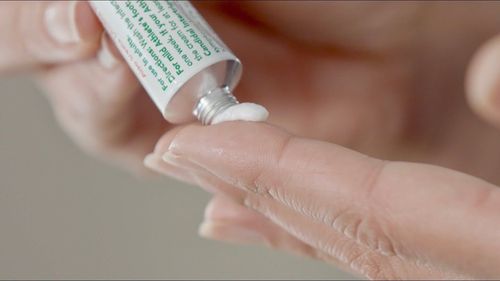This is an automatically translated article.
The article was written by Dr. Bui Thi Hang - Pediatrician at the Department of Regenerative Medicine Clinic and Educational Psychology - Center for Regenerative Medicine and Cell Therapy - Vinmec Times City International General Hospital.Diaper dermatitis, also known as diaper rash, is a common problem in pediatrics, causing stress for both children and parents because the problem persists, despite diligent care with diaper changes. . Diaper dermatitis can occur in any diaper-wearing child, but is most common in children between the ages of 9 and 12 months.
1. Overview of diaper dermatitis
A common cause of diaper dermatitis is irritant contact dermatitis. In irritant diaper dermatitis, the integrity and barrier of the skin is compromised by two main factors: Increased humidity due to the congested environment of the diaper combined with urine and feces and a high pH environment due to increased activity The activity of the protease is lipase.Symptoms of diaper rash: Erythema, papules and scabs of the skin in direct contact with the diaper; includes the convex part of the buttocks, inner thighs, and genitals.
Treatment goal: To facilitate the skin in contact with the diaper to maintain its physiological PH status, to limit exposure to irritants that cause skin damage as much as possible.
There are many methods to help achieve this goal; you can memorize easily according to the abbreviations A, B, C, D, E (meaning Air - Cool, Barrier - Anti-Rash, Cleansing - Cleansing, Diaper - Diaper and Education - Education).

2. Specific contact methods
A (Air time): Air time, aka diaper-free time, can be challenging for families to do over an extended period of time. However, timed exposure to air is the most effective, safe and economical treatment for diaper rash. It increases air circulation and dries the diaper area, preventing irritating components of urine and feces from attaching to the skin. A short nappy-free period can be implemented after a diaper change or in the shower to allow the diaper area to dry completely before a new diaper change. When your baby sleeps, you can use two towels instead of diapers to increase diaper-free time. This method seems to be more successful for girls.B (Barrier creams): Anti-rash creams are often the first line of treatment, parents can choose one from the many options on the market. The most popular and effective creams include zinc oxide, vitamin A and D ointment. Correct use is to apply a thick layer of cream after each diaper change, without thoroughly cleaning the skin between each use to Avoid irritation from rubbing. C (Cleansing): When cleaning the diaper area, use a product with a pH close to physiological and rub gently. For rough or damaged skin, a damp cloth can be used. D (Diaper): Diapers should be changed frequently, up to every 2 hours, reducing the contact time of irritants with the skin and keeping the skin as dry as possible. Parents may also be aware that cloth diapers are better than disposable ones. However, modern disposable diapers using a super absorbent gel layer, a more breathable outer layer and a thinner, body-hugging overall design have reduced the frequency of diaper dermatitis in developed countries. develop. Currently, there is no evidence that cloth diapers are more skin-protective, less inflammatory or more environmentally friendly than disposable diapers. E (Education): Educating caregivers about the importance of being consistent with a child's treatment plan. Avoid using products that are harmful to babies, such as cornstarch or talcum powder, which reduce skin moisture, increase friction with the diaper area, or during application can create dust particles that can cause problems. respiratory diseases.

Please follow the website: Vinmec.com regularly to update many other useful information.
Please dial HOTLINE for more information or register for an appointment HERE. Download MyVinmec app to make appointments faster and to manage your bookings easily.














